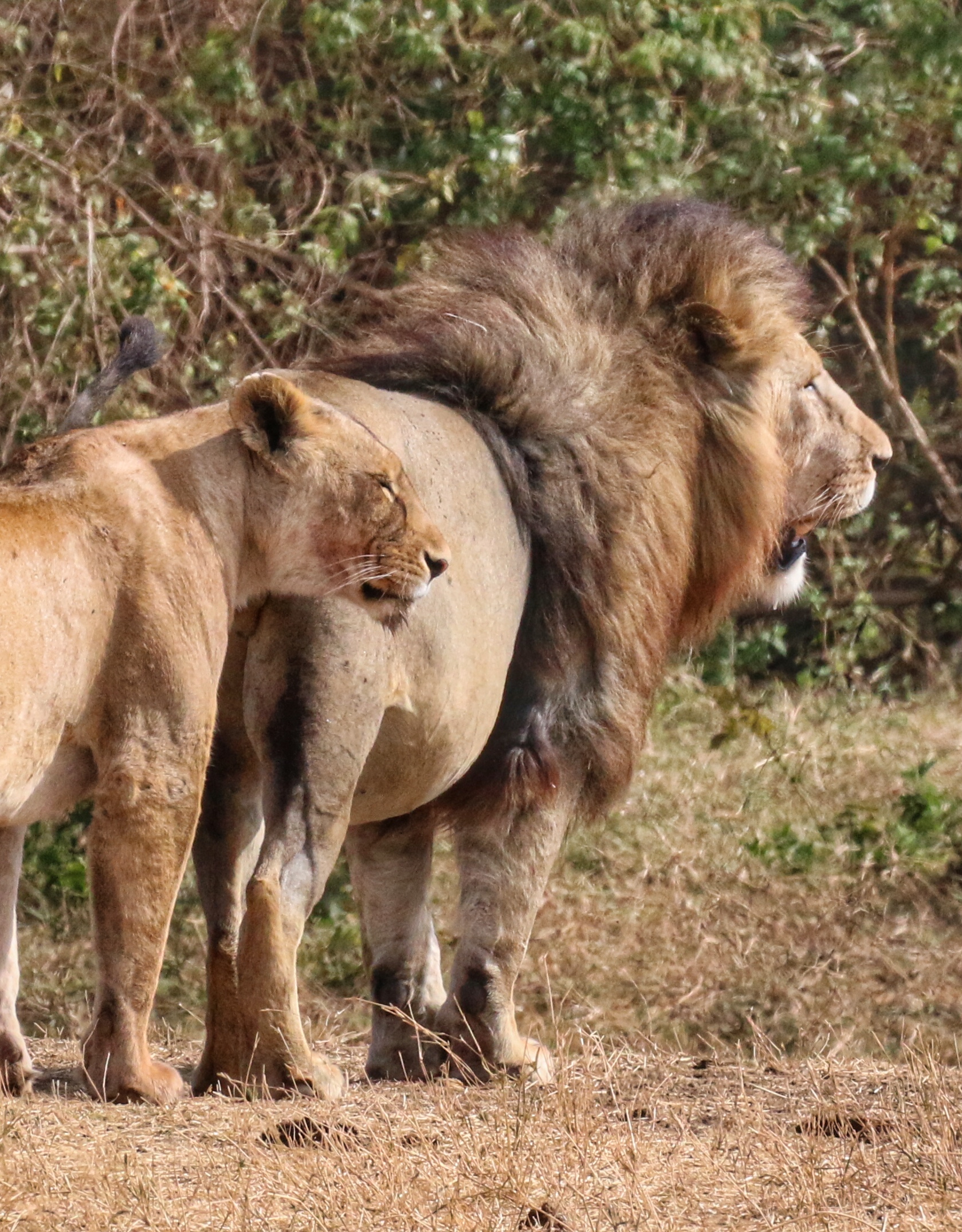Two and a half million years ago, a volcano larger than Mt Kilimanjaro erupted, leaving behind the largest caldera, or crater, in the world. Stretching 20 kilometers in diameter and protected by 2,000-ft-high cliffs, the crater acts rather like a tide pool, holding within it a fairly constant population of animals (as opposed to the more open parks, which are more subject to the whims of migration). All of the famous “Big Five” can be found there (lions, Buffalo, leopards, elephants and rhinos) as well as grazing herds and a multitude of birds.
Steep roads lead down to the crater floor
After a night of chilly but spectacular stargazing at a rim-side campground, we had an early-morning pick-up for our game drive. Descending into the crater in our 4x4s, we passed giraffes, elephants and a sleeping lion before we even reached the crater floor.
About 20 minutes into the drive, our driver noticed a stirring in the long grass. We were all focused on an ostrich that was crossing the road (presumably, in fine avian tradition, to get to the other side), and were a bit confused when our enthusiastic ostrich-viewing came to an abrupt end as our driver took off at near-top speed down the trail. As the grass thinned, we understood his urgency: a pride of lions was crossing the grassland.
The thing about lions is there are always more lions seeing you than you actually see. The half-dried golden grass is such excellent camouflage for their buff-colored coats that you can be looking right at one, and miss another that is crouched right next to it. We were beyond excited to see three female lions prowling towards us. Then another three emerged from the grass. They were followed by a male with a glorious tawny mane. Then a lioness closely accompanied by a half-grown cub. Then ANOTHER male, this time with a dark mane.
I have been constantly surprised by how willing many animals in the parks seem to be to interact with humans. Safari vehicles are confined to the marked trails through the park. There are plenty of places for the animals to be that aren’t near tourists. But the lions didn’t hesitate to approach our vehicles. Several lionesses rubbed their faces and bodies on the trucks, like a pet cat on its owner’s sofa. Both males stopped to mark a safari truck with their scent (first the tawny-maned male, then several minutes later the dark-maned one). Then they settled down to groom and nap in full view of the trucks.
Our driver pointed to a nearby herd of zebras that had been grazing, and was now standing at attention. “See how they’re all looking in the same direction? Always pay attention when the animals are all looking in the same direction.”
This advice came in handy a short time later. We had continued our drive after the lions settled down in the shade, spotting a trio of jackals darting through the zebra herd, hippos in a wallow, a pair of crested cranes. Then we came upon another group of zebras all staring fixedly in the same direction. There were already several 4x4s parked nearby, so we had two indicators that there was something worth seeing.
It definitely exceeded my expectations: a lioness was dragging a zebra carcass across the road. Nobody had seen the kill, so it was a matter of intense speculation for the rest of the day. Did the lions kill the zebra? If so, why was there only 1 lioness there? Or did hyenas kill it and the lioness chased them off? We’ll never know, but it was pretty amazing to watch her.
I could have stayed with her all day, but all good things must come to an end, including our game drive. Our last sighting of the day was a large bull elephant who walked right by our trucks when we hopped out to have tea and coffee.



















